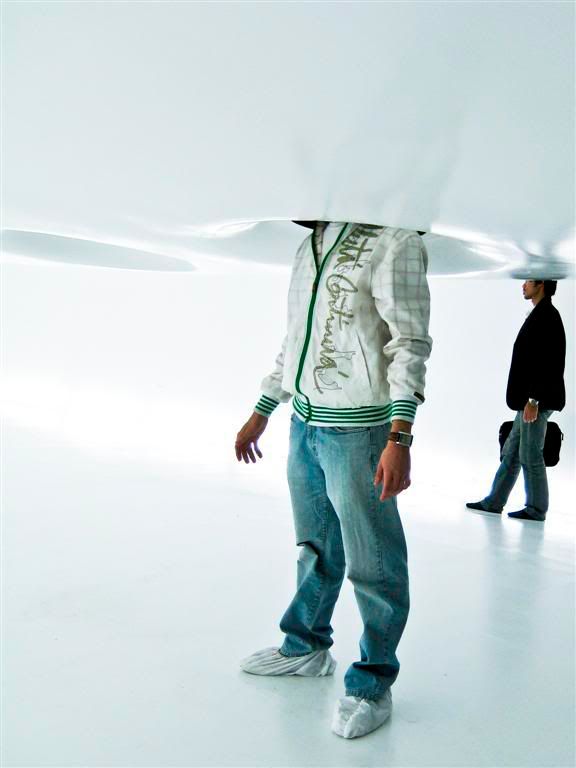The Guggenheim virtual museum is a collaboration between Asymptote Architects and the Guggenheim museum organization to create a cyberspace museum. If it ever gets launched, it will be a continuously evolving project as new exhibits are brought in and old ones disappear. The project involves 3D, navigable spaces and interactive, physical spaces that can be accessed throughout the Guggenheim locations. The goal is to converge the way art is viewed through the museum locations and the cyberspace environment. Paintings and videos will be converted for display online but the most important aspect of this project is that it will exhibit projects that can only be displayed through the computer. The goal is to also inspire artist to create new forms of art; much like Frank Lloyd Wrights Guggenheim inspired a new age of artist.
The online museum is a space that is in constant flux. It morphs in accordance with the users movement from node to node. It has many metaphors that link the museum to actual space. The beginning animation looks like a representation of an atrium. The transformations are similar to what the eye would perceive if moving through a building. This creates an experience based on time and memory which is more like a real life experience. Events and exhibits are found in various areas; they are not listed or linked to. Although the ‘atrium” space does have and up and down orientation the rest of the model doesn’t. It maintains the precursors of an actual building but it removes any notion of gravity once the user actually “moves” through the museum. It provides some of the amenities found in an actual museum: special exhibits, archives, events, amenities, Cyber Theater, and shopping. The interface allows for simultaneous tasks. For example, work in an exhibit can be viewed while simultaneously participating in a lecture or watching a film.
The museum works through 3 main on screen objects. One is the morphing 3-dimensional representation of the Guggenheim. This model is designed like twisting corridors with nodes placed in various locations. As the space is navigated, this 3-d building morphs, rotates, and is reoriented on the screen. To ease the disorientation created by the buildings constant flux, a vertical bar is set in place to aid in navigating to the main areas of the building. Those main areas include the Artscape, Azone, Mediasphere, Virtual Architecture, and the GVM Archive. As it moves across the screen, like a scanner, it transforms the space it passes over to create the identity of the new space that gets “occupied.” The third element is a bar across the bottom of the screen that allows visitors to see the various states of the building at any given moment. This bottom bar is actually a table showing the angle of rotation in the x and z axis for orientation. It can be placed on the screen or hidden depending on user preference.
Asymptote designed the museum using Alias, Maya, Cosmo Worlds VRML, Photoshop, Premiere, and Flash.
Wednesday, October 24, 2007
Subscribe to:
Post Comments (Atom)



No comments:
Post a Comment